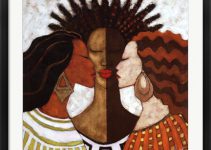William-Adolphe Bouguereau was born an artistic prodigy. As a young boy in mid-1800s France, he created impressively realistic paintings and drawings from a very young age. His uncle recognized his talent very early on and encouraged him to continue practicing his painting. He gave him jobs to create portraits for people that he knew, and soon, others realized his talent as well.
Bouguereau’s father enrolled him in Ecole des Beaux-Arts, based in Paris. His study in art eventually lead him to create a painting of the Catholic Saint Roch, a work that earned him the Prix de Rome prize… but that was just the beginning.
William-Adolphe Bouguereau Wins Over American Bourgeoisie
In the early 1900s, wealthy American art collectors went to Paris in search of uniquely talented artists who could help them round out their collection. The almost photographic realism of William-Adolphe Bouguereau’s paintings gained immediate popularity with buyers. In his own era, he was one of the most successful artists in the Western world.
As buyers demanded more from Bouguereau, he delivered. He churned out new paintings at a prodigious rate. But despite his high volume of artwork, he demanded respect and ample compensation for each piece. He once said, “every minute of mine costs 100 Francs,” making sure everyone remembered how lucky they were to have an original Bouguereau painting.
William-Adolfe Bouguereau VS The Impressionists
Bouguereau was popular for his paintings, but he was also renowned for standing in contrast to the Impressionists. William-Adolfe was far from impressed with the imprecise creative style of Impressionist painting, and likewise, his Impressionist contemporaries found him stuffy and overly fastidious. Though he brushed shoulders with great artists like Monet and Degas, Bouguereau stated that he couldn’t even talk about them–he simply did not see the world the same way that he did.
Despite his disagreement with other artists of his era, art students recognized William-Adolphe Bouguereau has a wonderfully encouraging teacher. He believed that training other young artists was an important and noble cause. He also advocated for the training of female students at the Academie Julian, and many of his pupils found it a privilege to study under such a fair and gentle teacher.
A Lasting Legacy… ?
Bouguereau was revered by his contemporary patrons, but his current critical acclaim is another story. After his death, his reputation fell considerably. Art historians and critics no longer place him in such high esteem. Some critics claim that he took advantage of his middle-brow audience. Some thought his popularity was due to his prolific number of realistic female nude paintings. His traditional taste may have earned him unfair criticism in the years following his passing.
Criticism aside, Bouguereau’s paintings, as well as framed prints, continue to sell well. His masterful depictions of women and children continue to fascinate modern audiences in the 21st century. One particular painting of the Greek Goddess Eos perfectly captures the beauty of the female form. The painting is also rich with movement and life, dispelling the reputation Bouguereau had for “lifeless nudes.” William-Adolphe used his own, precise style to share the beauty of the world with others, and that is what he should be remembered for.






